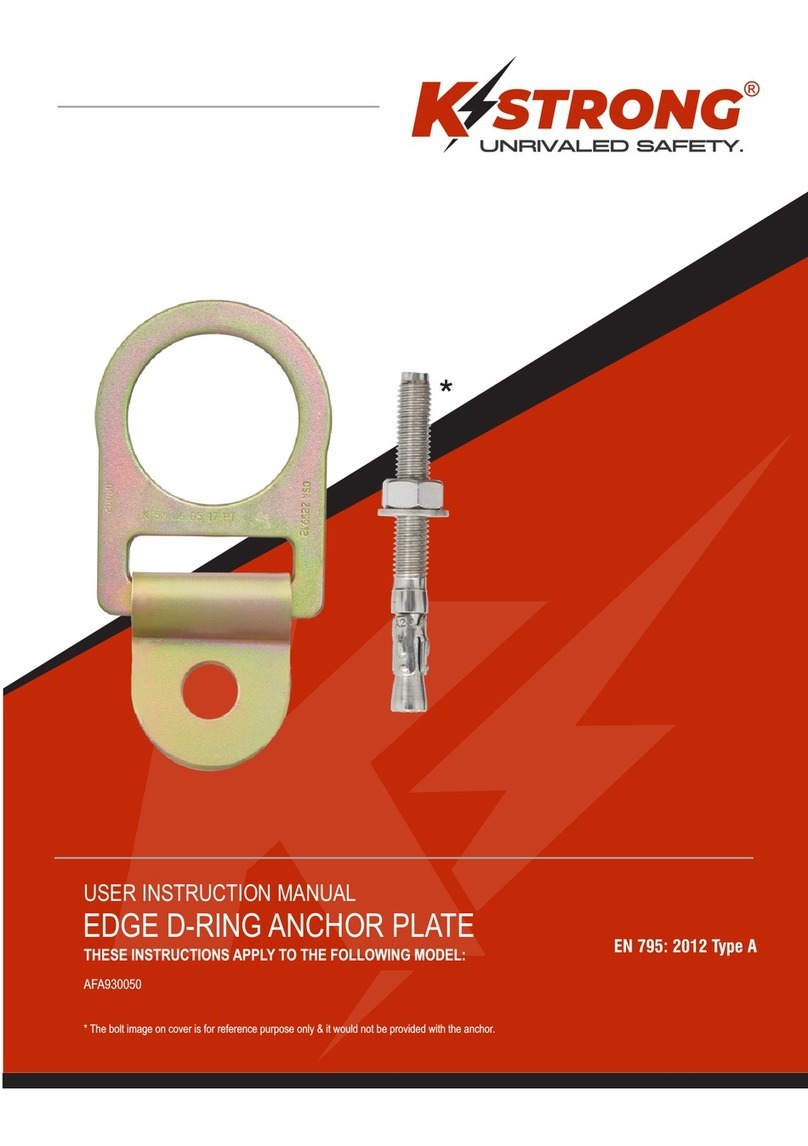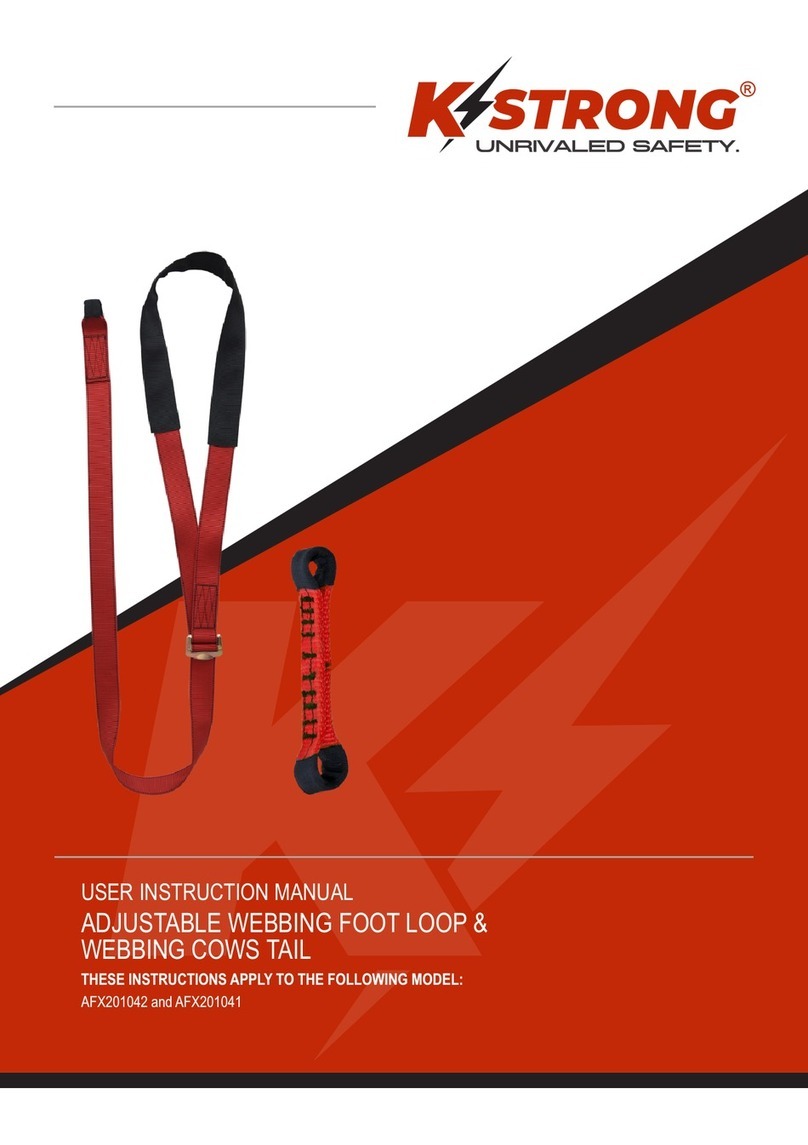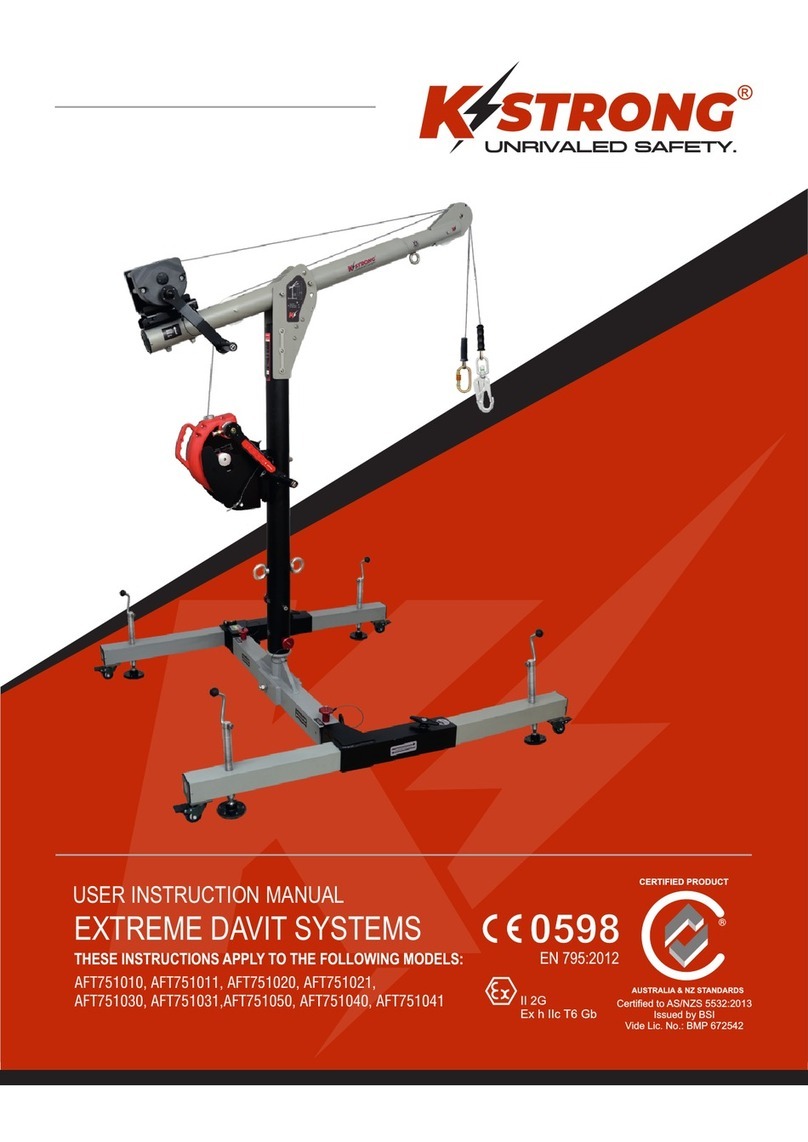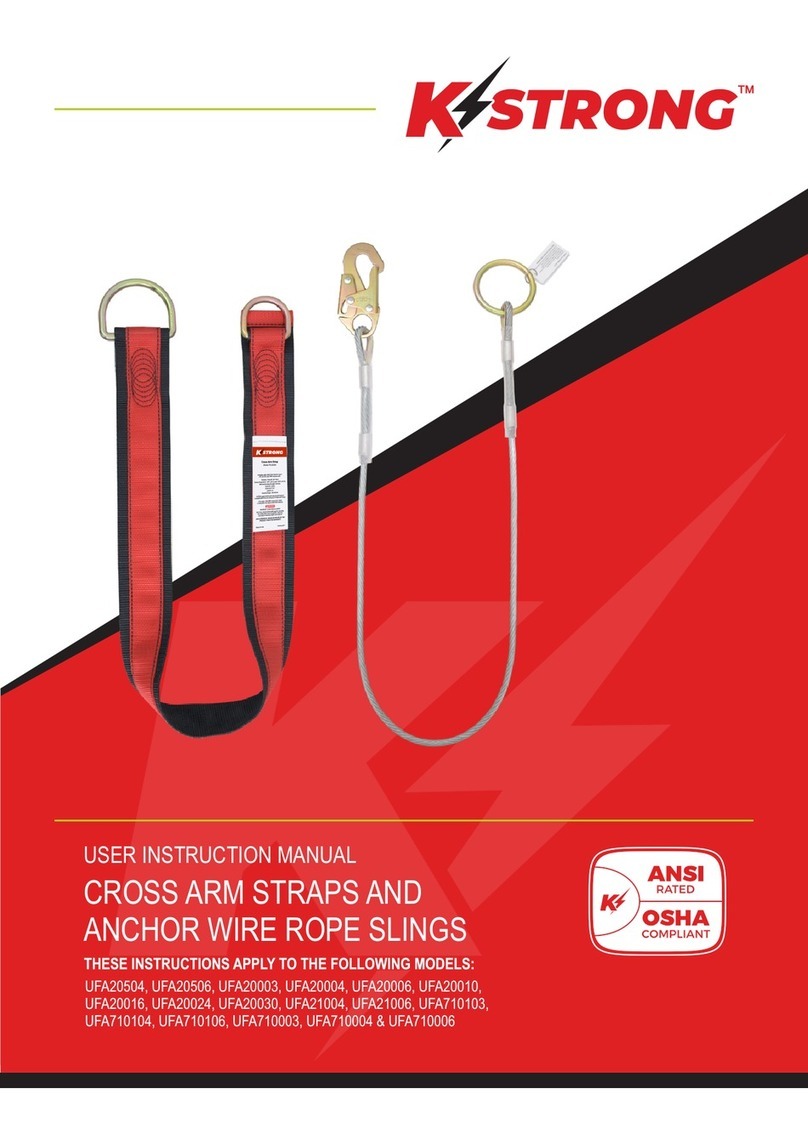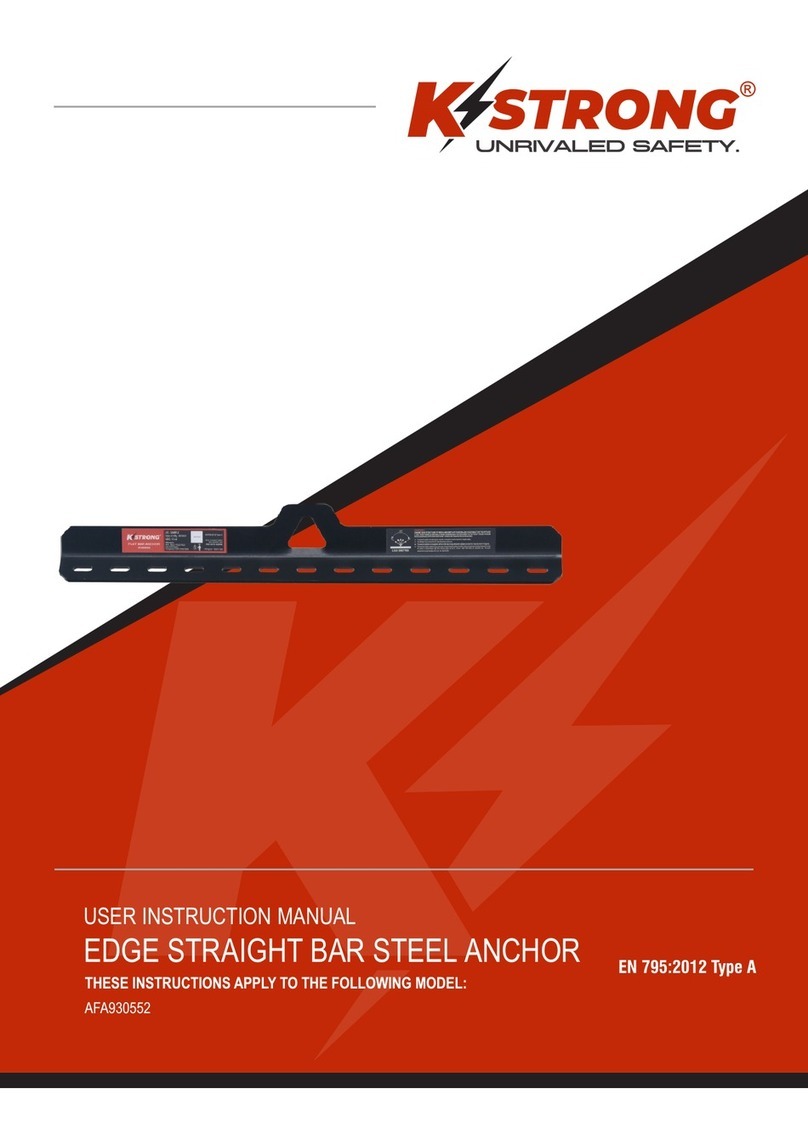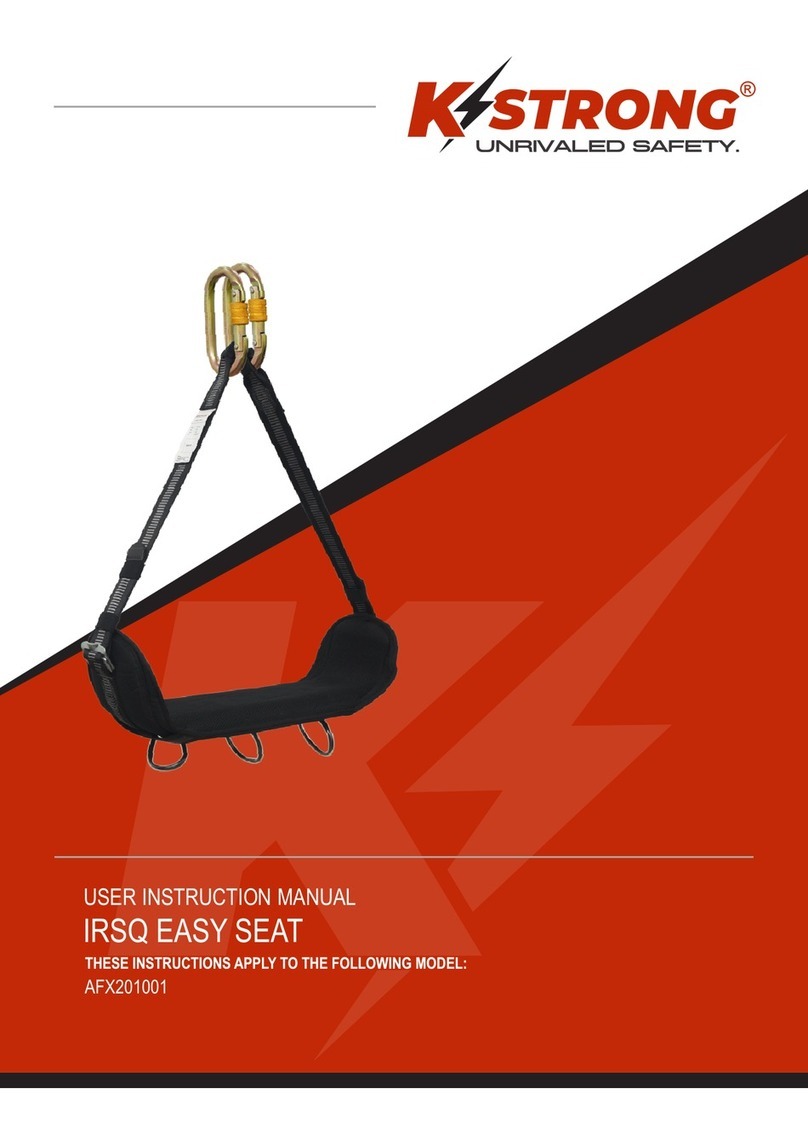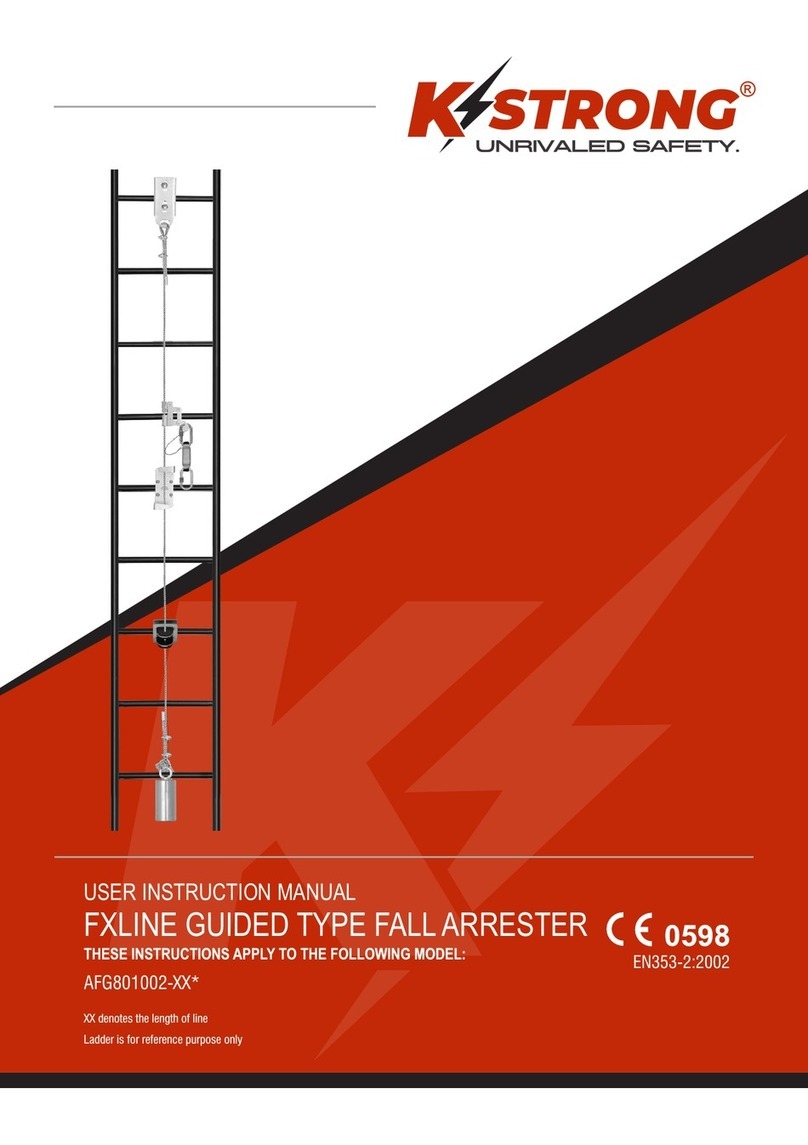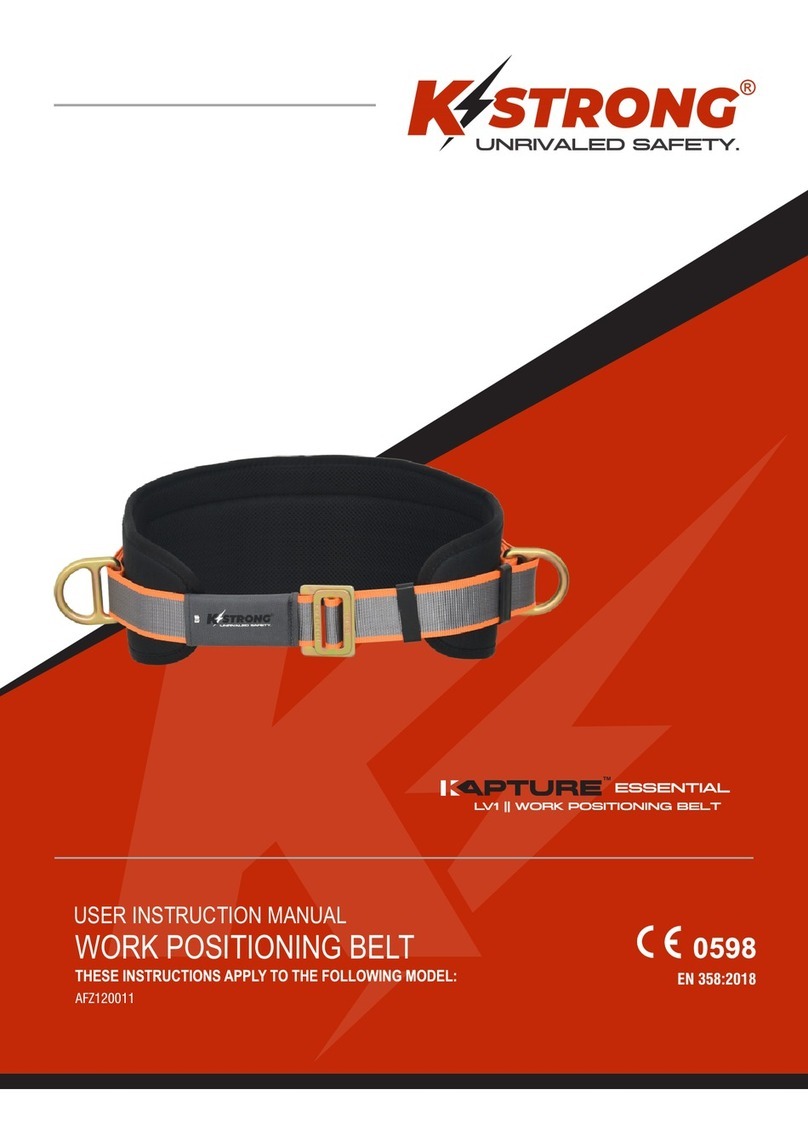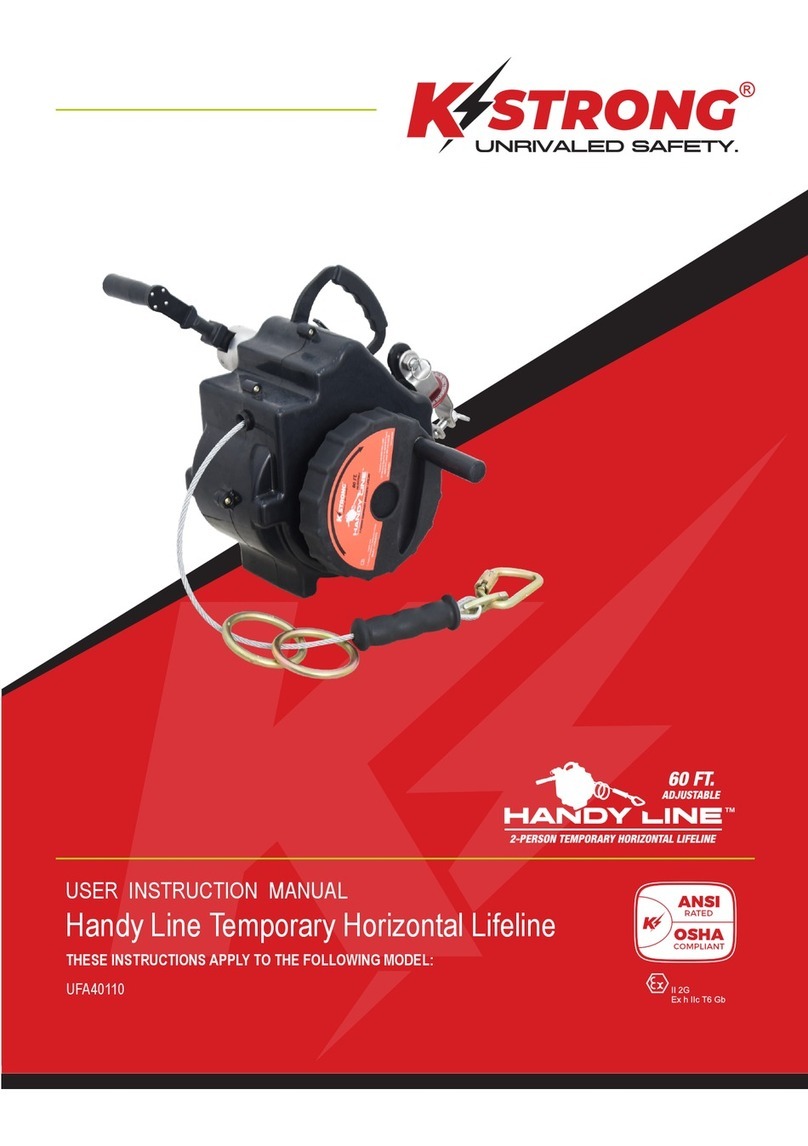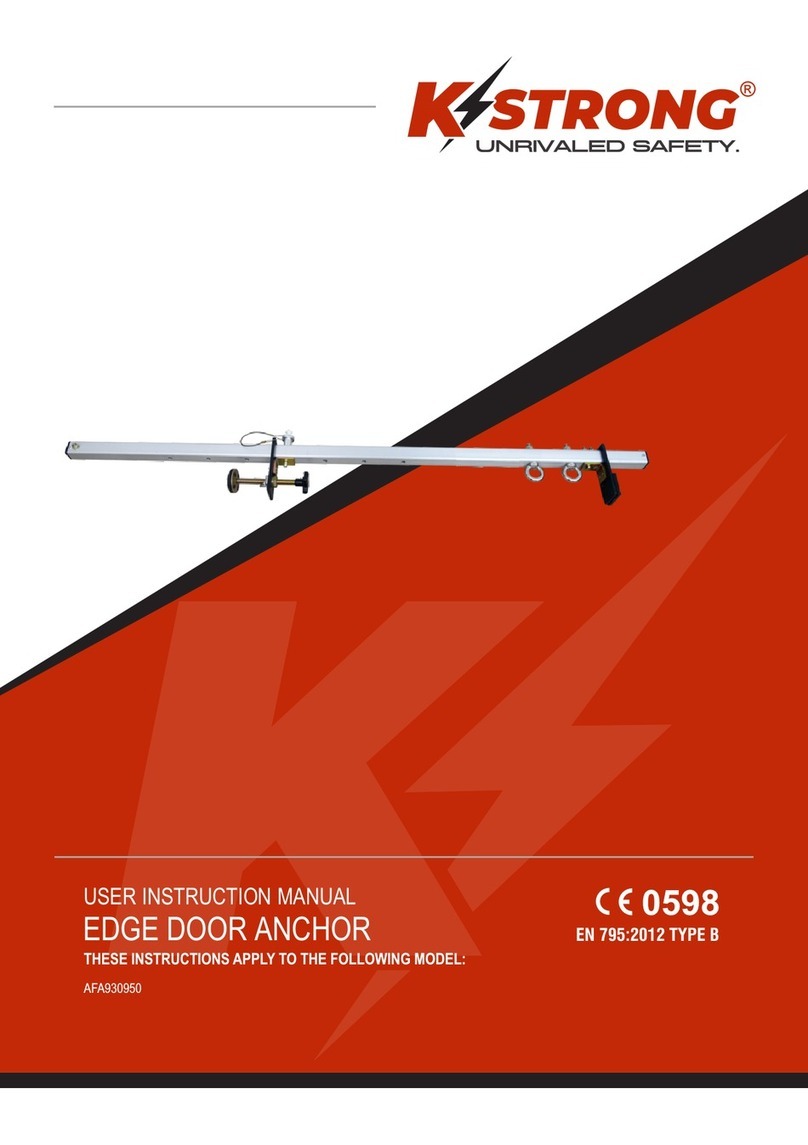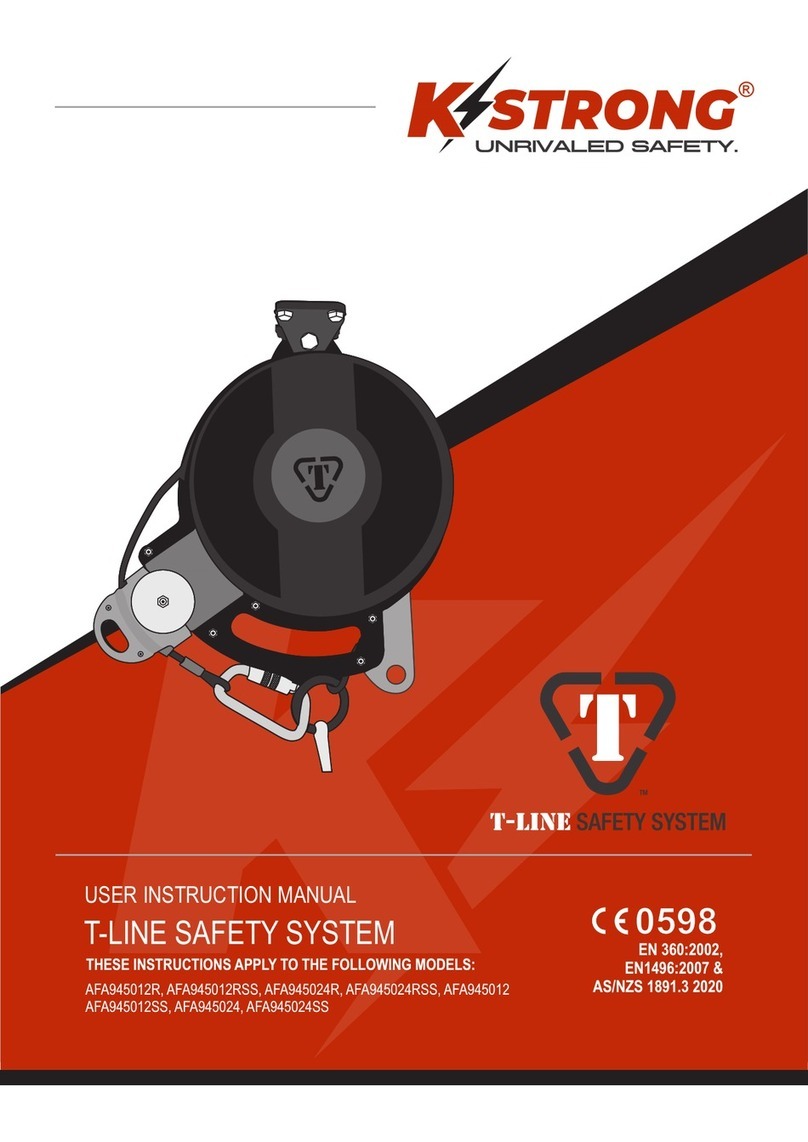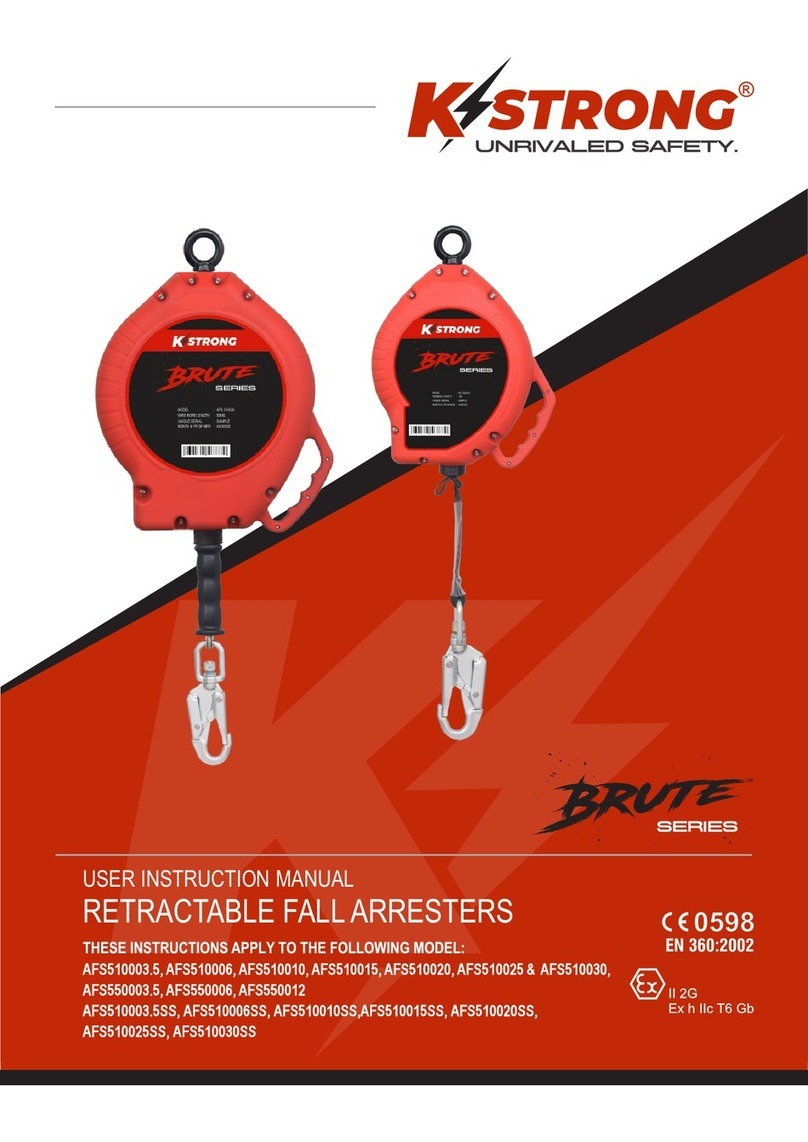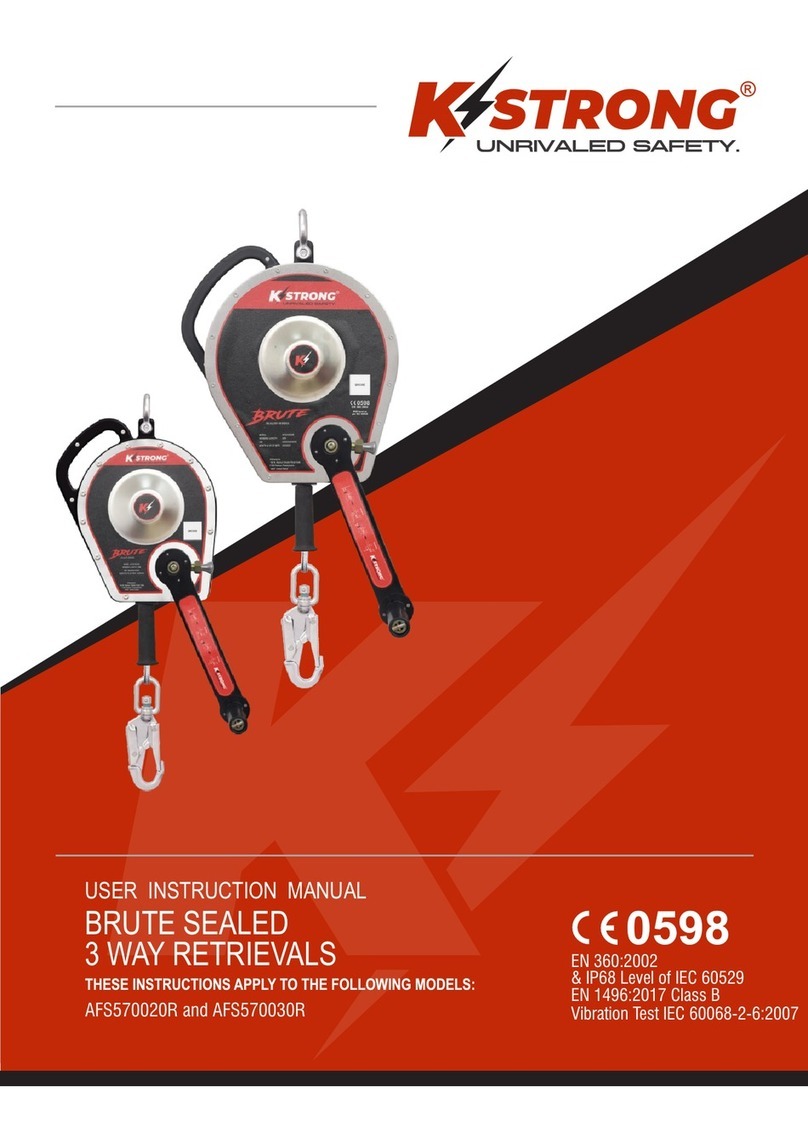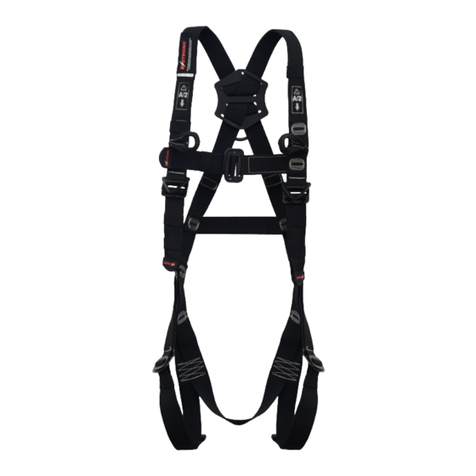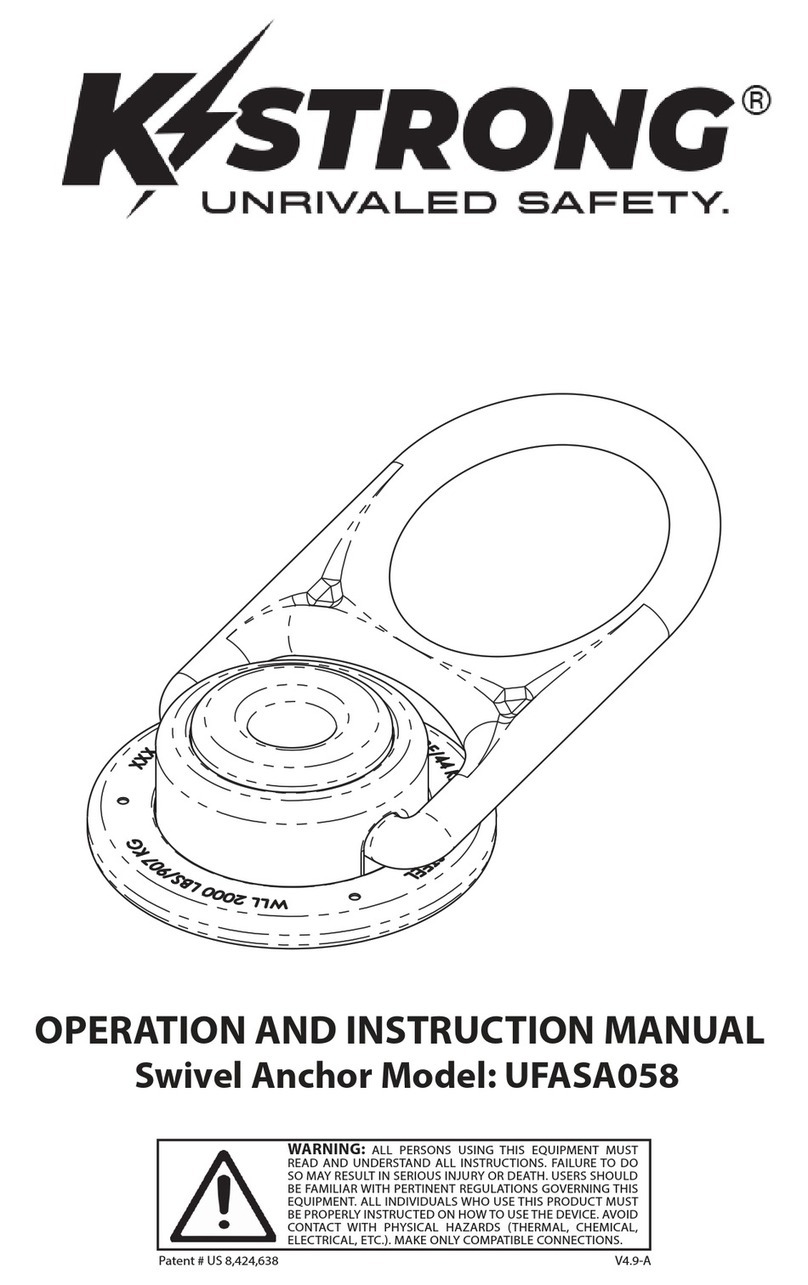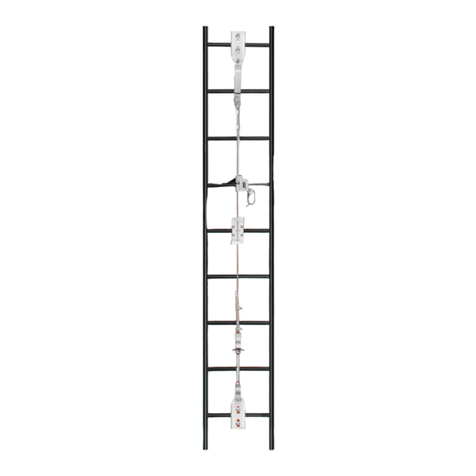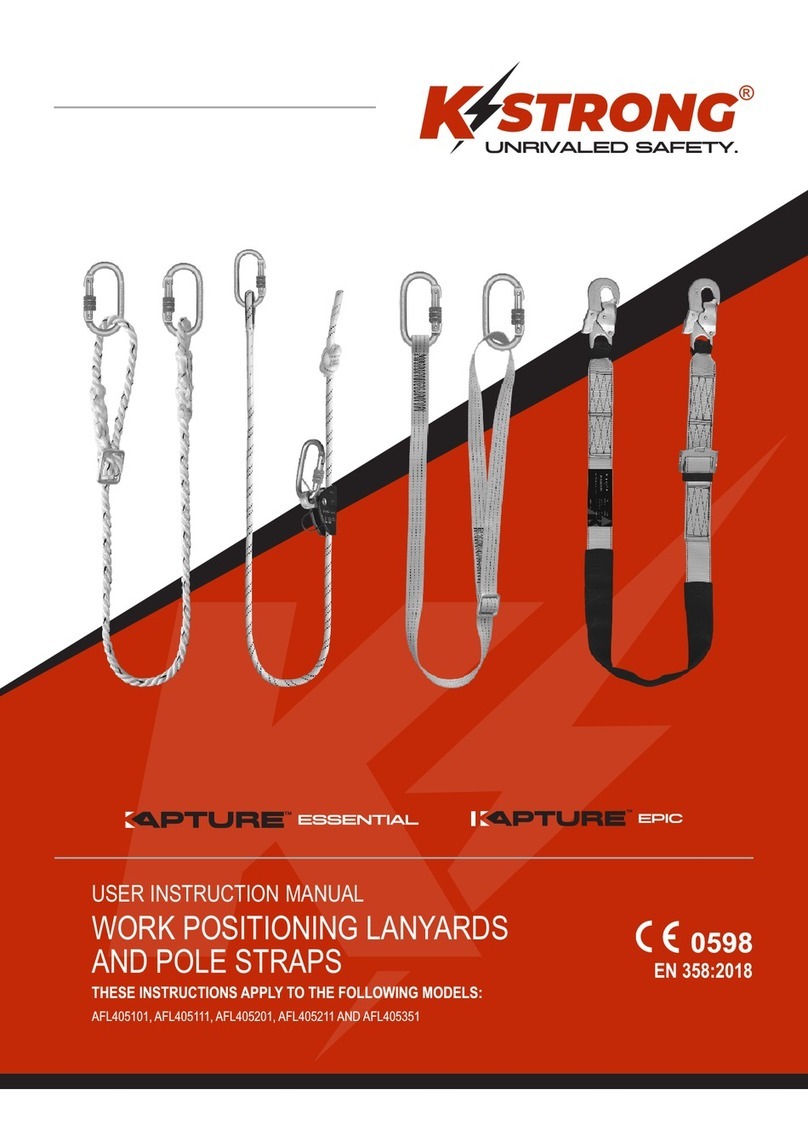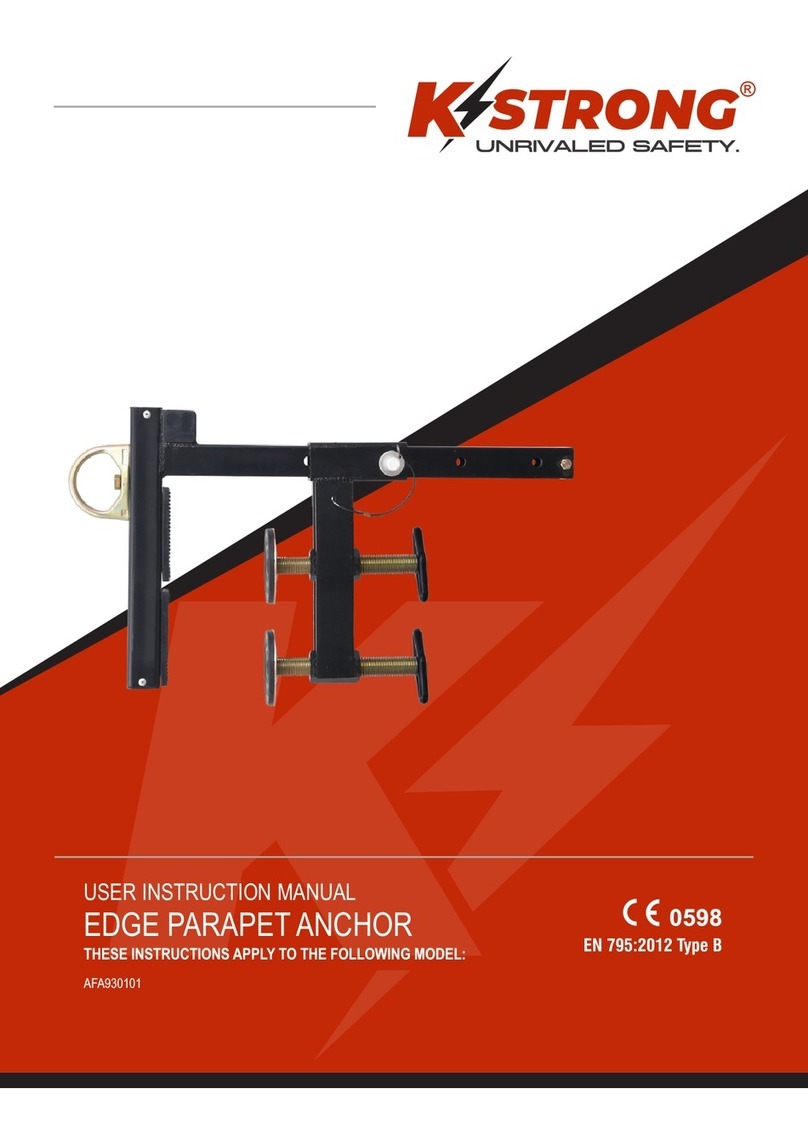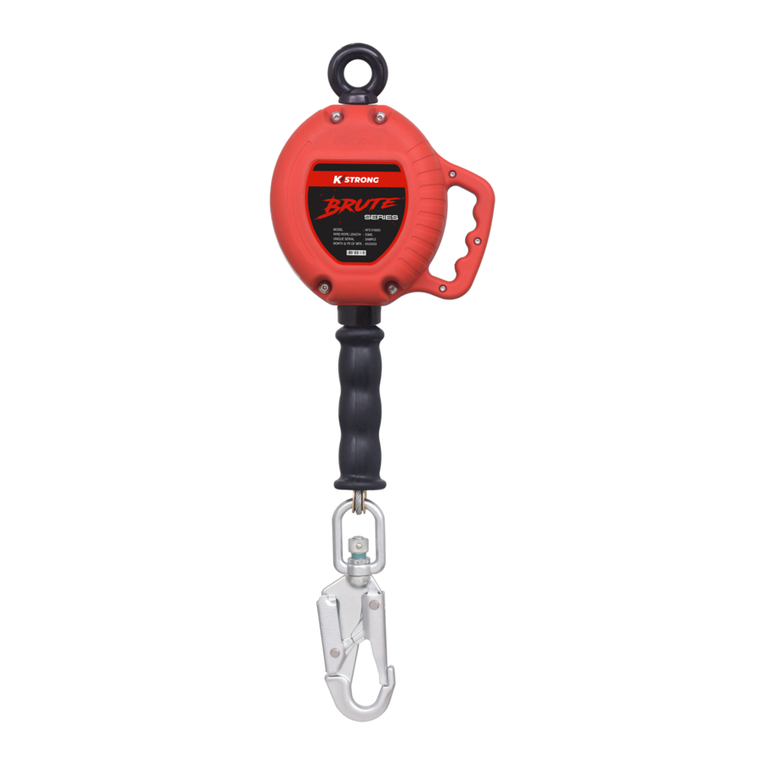
02
7. INSTRUCTIONS FOR MAINTENANCE:
Cleaning Procedure: In case of minor soiling, wipe the lanyard with cotton cloth or a soft brush. Do not use any abrasive material.
For intensive cleaning wash the lanyard in water at a temperature not more than 40ºC using a neutral detergent (pH7). Do not use
acid or basic detergents.
Drying Procedure: If the lanyard becomes wet, either from by in use or when due to cleaning, it should be allowed to dry naturally
and shall be kept away from direct heat.
Storage Procedure: When not in use, store the lanyard in a well-ventilated area away from extremes of temperature. Never place
heavy items on top of it. If possible, avoid excessive folding and preferably store it hanging vertically. If the product is wet, allow it to
dry fully before placing it into storage.
Ÿ
transported.
8. INSTRUCTIONS FOR REPAIR: If the product becomes damaged, it will NOT provide the optimum level of protection, and therefore it should
be immediately removed from service. Never use the damaged product. Repairing is permitted, provided that it is either done by the
manufacturer or a competent repair centre or individual approved by the manufacturer.
9. LANYARD
ŸSpread the lanyard on a table / flat surface.
lanyard
lanyard
10. WARNING:
It is essential to verify that the medical condition of the user is fit to use the lanyards in normal & emergency use.
Do not make any alterations or additions to the equipment without the manufacturer's prior written consent and that any repair shall
only be carried out in accordance with the manufacturer's procedures.
While using the lanyard, ensure that the fall is not more than 2m i.e. the distance between the anchor point & the final position of the
user after the fall has occurred.
Lanyard should be the personal property of its user.
It is important to check before use any dangers that may arise by the use of combinations of items of the equipment in which the safe
function of any one item is affected by or interferes with the safe function of another.
Carry out a pre-use check of the lanyard, to ensure that it is in a serviceable condition & operates correctly before it is used.
Inspect all the rope or webbing of lanyard for cuts/abrasion marks. Also check all connectors of the lanyard for proper mechanical
functioning & effects of corrosion or mechanical deformation if any on parts of the connectors in the lanyard.
Withdraw from use any lanyard for which any doubt arises about its condition for safe use or in the event, a fall has been arrested by it.
If the lanyard is used in a fall arrest system, it is advisable to connect only to the dorsal attachment D-Ring of the harness.
If lanyard is used in fall arrest system, it is essential for safety that the anchor device or anchor point is always positioned, and the
work carried out in such a way, as to minimize both the potential for falls and potential fall distance. Ensure that the anchor point is
above the user's head.
Only a full body harness complying to EN 361:2002 shall be used as a body holding device within the fall arrest system.
If used within fall arrest systems, it is essential to verify the free space required beneath the user at the work place before each
occasion of use, so that, in the case of a fall, there will be no collision with the ground or other obstacles in the fall path.
If the product is resold outside the original country of destination, the reseller shall provide instructions for use, for maintenance, for
periodic examination and for repair in the language of the country in which the product is to be used.
Ensure the Medical condition of the user does not affect his safety in normal and emergency use.
A rescue plan shall be in place to deal with any emergencies that could arise during the work.
It is essential for the safety of the user that if a product is re-sold outside the original country of destination the reseller shall provide
instructions for use for maintenance, for periodic examination and for repair in the language of the country in which the product is
sold.
Ÿ
Ÿ
Ÿ
Ÿ
Ÿ
Ÿ
Ÿ
Ÿ
Ÿ
Ÿ
Ÿ
Ÿ
Ÿ
Ÿ
Ÿ
Ÿ
Ÿ
Ÿ
Ÿ
It is preferred that the product be transported in its original packing. However if not available, it may be stored in an air tight bag &
HOW TO DISPOSE A : When the lanyard becomes unfit or in case of any wear and tear, dispose the lanyard immediately.
Follow the steps for Disposal:
ŸSegregate the equipment in three different crates for placing components in them respectively as- Textile, Metal and Plastic.
ŸInspect the wear & tear present on the .
ŸNow, using a sharp pair of scissors first cut the Textile and dismantle the lanyard.
ŸNow remove the metal & plastic components separately from the .
ŸPut the Textile, Plastic & Metal components in their respective plastic crates.
